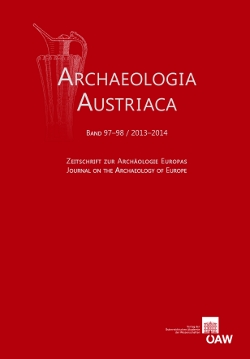
Archaeologia Austriaca 97-98/2013-2014, pp. 97-114, 2014/12/30
Zeitschrift zur Archäologie Europas
Journal on the Archaeology of Europe
During an interdisciplinary collaboration, prehistoric archaeologists and systematic musicologists (both from institutes of the University of Vienna), carried out fundamental research in archaeoacoustics for the first time in Austria, using acoustic measurement equipment and analytical techniques. Five instruments from different periods and places of discovery, reconstructed to scale, were recorded in the semi-anechoic chamber at the Institute of Musicology of the University of Vienna. Timbres, spectral shapes, pitch ranges, modulations in frequency and dynamics and the resulting spectral changes were analysed. Measurements of room acoustics were made in full-scale replicas of a longhouse from the Early Neolithic Linear Pottery Culture and of a semi-subterranean pit dwelling from the La Tène period. The intention was to gain a better understanding of the listening habits of earlier ages and to develop an approach to describe the potential role of the scientific study of room acoustics for music and speech. The building materials (wood, straw and clay) are soundabsorbent to a large extent, and additionally a lot of sound energy is lost because of gaps in the walls. Thus reverberation times are quite low in both buildings. The acoustic influence of the rooms is rather small, and there is hardly any difference when compared to an open field.
Keywords: Archaeoacoustics, prehistoric acoustics, music archaeology, longhouse, pit dwelling, Linear Pottery Culture, La Tène period, Neolithic instruments